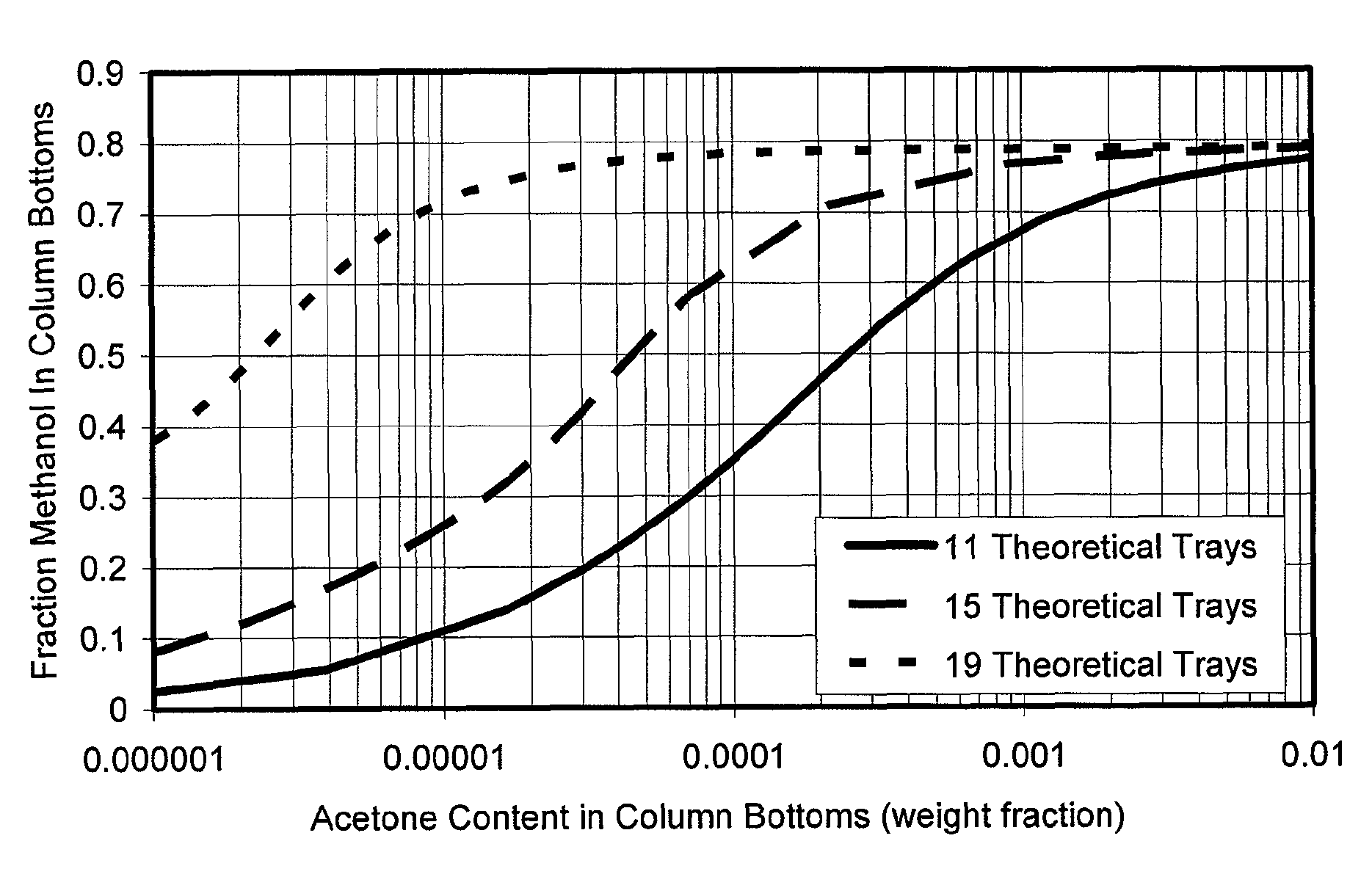Method of reducing methanol in recycle streams in bisphenol-A production process
a technology of methanol and recycle streams, which is applied in the direction of separation processes, organic chemistry, chemistry apparatuses and processes, etc., can solve the problems of increasing equipment, accelerating catalyst deactivation, and requiring additional equipment. to achieve the effect of avoiding catalyst deactivation
- Summary
- Abstract
- Description
- Claims
- Application Information
AI Technical Summary
Benefits of technology
Problems solved by technology
Method used
Image
Examples
example 1
[0050]A commercial process simulator was used to investigate the behavior of a distillation column for the separation of acetone, methanol, and water. An activity-coefficient binary parameter set was derived from readily available vapor-liquid equilibrium data for acetone, methanol, and water. The predicted performance of an atmospheric distillation column for methanol removal is summarized in the drawing, where the fraction of the feed methanol in the bottom product is shown as a function of the acetone content in the column bottom
[0051]product and the number of theoretical trays in the column. This FIGURE demonstrates that columns with a larger number of theoretical trays will be more effective in rejecting the methanol from the acetone. This FIGURE also demonstrates that higher methanol rejection can be obtained if a larger amount of residual acetone can be tolerated in the column bottoms product.
example 2
[0052]An existing distillation column had been used for many years for the recovery of unreacted acetone from water and other minor components, including phenol and bisphenol A. This column, containing dumped packing, was operated at atmospheric pressure. Recovered acetone was removed from the top of the column, and water and other less volatile impurities were removed from the bottom of the column. The column was typically operated to ensure that less than 10 ppm of acetone remained in the bottoms product. The recovered acetone was combined with makeup acetone and recycled to the reactors. The makeup acetone contained 100-200 ppm methanol. Sampling and analysis of the feed, overheads, bottoms and combined recovered acetone revealed that methanol had accumulated in the process, resulting in as much as 2% methanol (by weight) in the recovered acetone. Removal of methanol from the process without significant capital investment was desired.
[0053]The existing column was characterized as...
PUM
| Property | Measurement | Unit |
|---|---|---|
| pressure | aaaaa | aaaaa |
| pressure | aaaaa | aaaaa |
| pressure | aaaaa | aaaaa |
Abstract
Description
Claims
Application Information
 Login to View More
Login to View More - R&D
- Intellectual Property
- Life Sciences
- Materials
- Tech Scout
- Unparalleled Data Quality
- Higher Quality Content
- 60% Fewer Hallucinations
Browse by: Latest US Patents, China's latest patents, Technical Efficacy Thesaurus, Application Domain, Technology Topic, Popular Technical Reports.
© 2025 PatSnap. All rights reserved.Legal|Privacy policy|Modern Slavery Act Transparency Statement|Sitemap|About US| Contact US: help@patsnap.com

